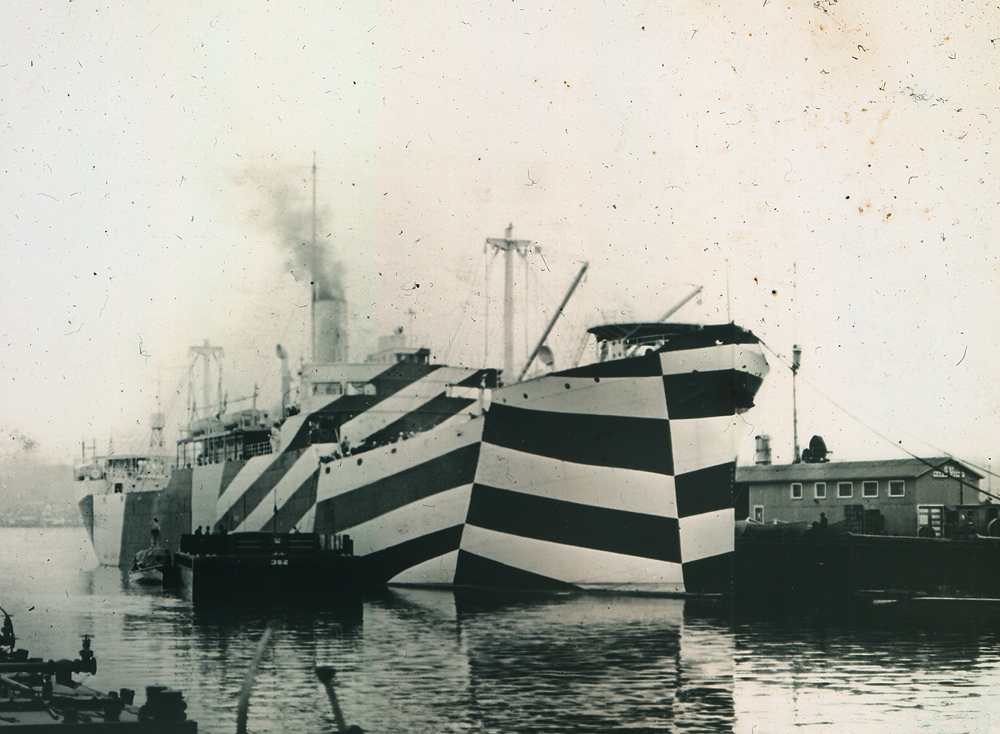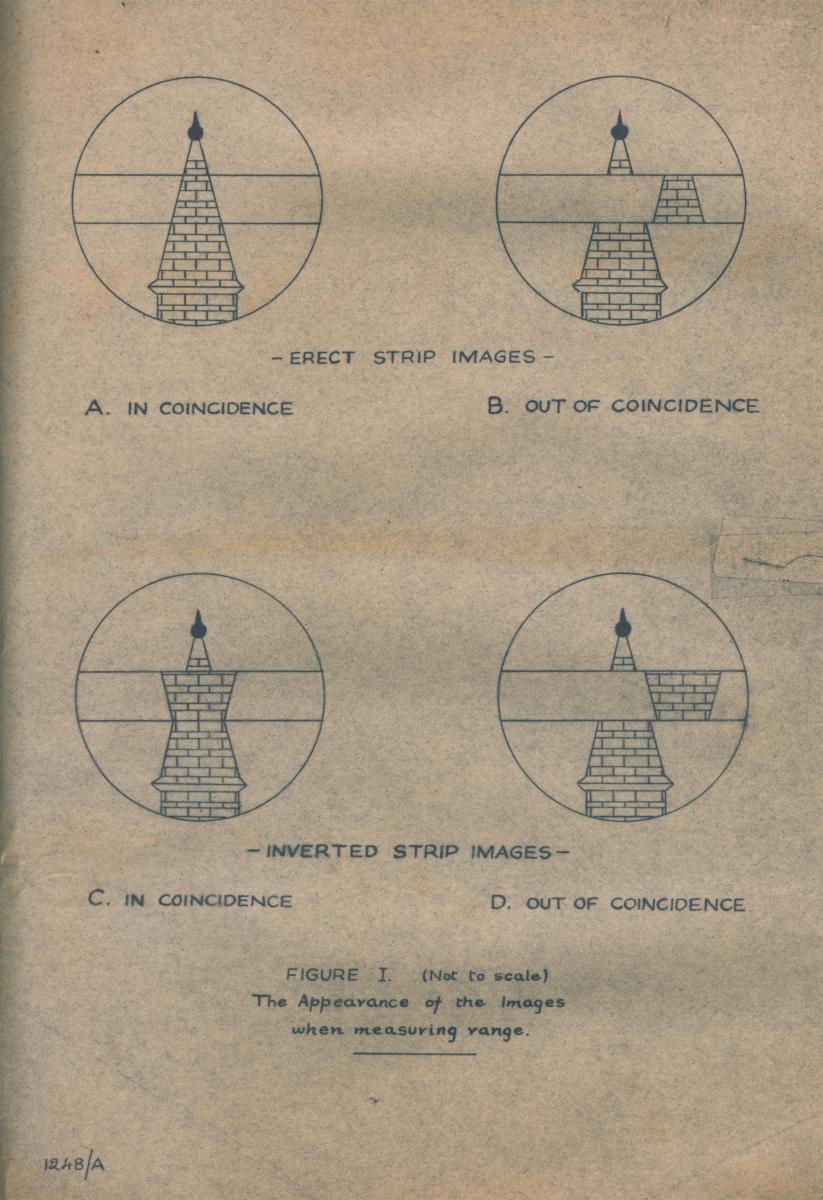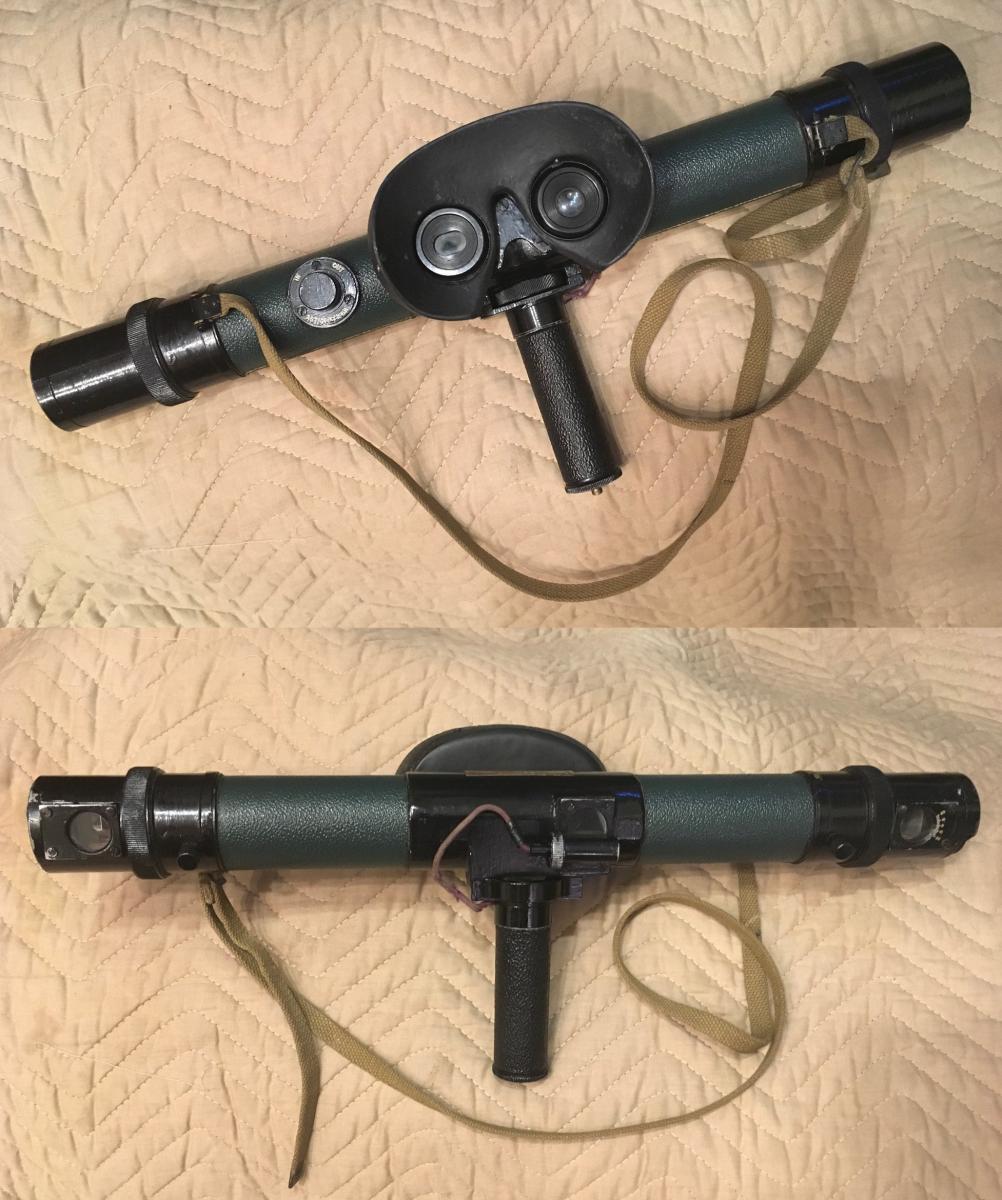The United States Navy was well aware of the threat posed by German U-boats when America entered World War I in April 1917. Kaiser Wilhelm’s submarines wrought havoc on Allied shipping since the War began in 1914, sinking hundreds of vessels. American merchant shipping also suffered heavy losses during Germany’s periods of unrestricted submarine warfare.
British artist and Royal Navy officer Norman Wilkinson devised a method of camouflaging ships in early 1917 to help combat the threat. Wilkinson knew it was impossible to hide a ship on the ocean, so he went the opposite direction and developed paint schemes that used bright colors, geometric shapes, and irregular lines. The idea was to confuse an observer’s perspective so that they could not tell what type of ship they were looking at or the direction in which it was traveling.
The Royal Navy dispatched Wilkinson to Washington, D.C. in mid-1917 to teach the U.S. Navy about “Dazzle” painting, as they called it. The Americans named Wilkinson’s designs “Razzle Dazzle.”

In order to shoot accurately at a target, gunnery officers had to know the distance from their ship to a target. To to take this measurement, they used optical instruments called rangefinders which used a series of movable prisms and lenses to measure the distance to a target. Almost all Allied submarines and surface ships used coincidence rangefinders, instruments based on those made by the Barr & Stroud Company of Glasgow, Scotland, called “coincidence rangefinders.”
Looking through one of the two eyepieces, the user saw an image broken into halves or parts. The user then adjusted the instrument so that the pieces came into alignment. The range could then be read from a scale in the other eyepiece. Some coincidence rangefinders displayed the halves or parts of the image right side up, others displayed the pieces as mirror images of each other. User preference determined the type of instrument used.

Wilkinson intended for Razzle Dazzle camouflage to confuse or defeat rangefinding equipment, because gunnery officers needed clear vertical lines or distinct points to accurately use coincidence rangefinders. Wilkinson reasoned that since Razzle Dazzle broke up a ship’s form, it would be difficult, if not impossible, to use standard rangefinders against them.
Initial testing by the British and Americans determined he was correct, which led to a wide variety of patterns and color schemes used on military and merchant vessels. The U.S. government also requested inventors like Elmer Sperry to devise new types of rangefinders in case the Germans adopted Razzle Dazzle.

Naval experts hotly debated the effectiveness of Razzle Dazzle after the War. Most argued that heavily armed convoys made more of a difference than Razzle Dazzle because, as they learned after the Armistice, the Germans used “stereoscopic” rangefinders that worked in a completely different manner than coincidence rangefinders, minimizing the effects of Razzle Dazzle. Regardless of these findings, Allied sailors took pride in their brightly colored camouflage and felt it contributed to their victory in the war.
Lucas R. Clawson is the Hagley Historian at Hagley Museum and Library.
